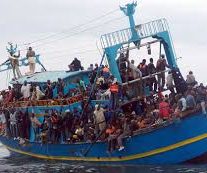
The situation in Libya in Fall 2017
Migration 15 November 2017UNHCR spokesperson Andrej Mahecic recently talked about over than 20,000 migrants and refugees being held captive by smugglers in different locations, including farms, houses and warehouses in and around the coastal city of Sabratha in Libya.
Since mid-august 2017, fewer boats transporting migrants have arrived at Italy’s shores. However, it is feared that Libyan counterparts are using coastal control as a way to threaten Italy and a tool to negotiate agreements on “migration management” in exchange of resources. Organisations are distrustful of the counterparts chosen by the Italian Government to negotiate border control, because of the suspicion that those are the same parties that have been controlling smuggling networks and trajectories in the last months. (see the documentary from the Italian journalist Amedeo Ricucci, l’Imbroglio, and Associated Press investigations).
NGOs are very concerned with the current impact of the discussions with Libyan authorities on children, especially in cases where children are still in Libya and or are obliged to remain in Libya. Many mental health issues are caused by violence, abuses and inhuman treatments suffered in detention centres in Libya. Italian authorities and international organisations are discussing outsourcing age assessment and requests of international protection in Libya directly – even if organisations have spoken about the abuses and risks of such practices (see e.g. ECRE report on Safe and Legal access Channels, p.44).
UNHCR and IOM’s local staff have access to 27 out of the 29 official centres in Libya, which are run by the department to combat irregular migration. UNHCR and IOM don’t have access to the illegal detention centres managed by the militia. No one knows how many illegal centres exist in Libya and how many people are being trafficked, killed or exploited. At the moment, all persons intercepted by Libyan coast guards are placed into detention centres.
“UNHCR colleagues on the front lines describe a picture of human suffering and abuse on a shocking scale” says Mahecic. “Amongst the refugees and migrants who suffered abuse at the hands of smugglers, there are pregnant women and new born babies. Hundreds of people were discovered with no clothes or shoes. Scores of them are in need of urgent medical care, with some suffering from bullet wounds and other visible signs of abuse. Refugees and migrants who were rescued from the smugglers are visibly traumatized. Most of them say that they were subjected to numerous human rights abuses, including sexual and gender-based violence, forced labour and sexual exploitation. Many say they were beaten and forced to work for long hours without any food or water. They were kept in cramped conditions, often without any toilet facilities or ventilation. When found, hundreds told us they had not eaten for days. UNHCR staff have identified a worrying number of unaccompanied and separated children, many under the age of six. A large number of them report losing parents on the journey to Libya or in the chaos that resulted during the events of the last few weeks.”


